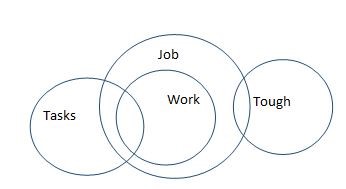Question
Statements: Some tasks are work. All
work are job. Some job are tough Conclusion: I. Some tasks are tough. II. All work are tough. III. No job is task. In each question below are given some statements followed by some conclusions numbered I, II, etc are given. You have to take the given statements to be true even if they seem to be at variance with commonly known facts and then decide which of the given conclusions logically follows from the given statements, disregarding commonly known facts.Solution
Some tasks are work(I) + All work are job(A) ⇒ Some tasks are job (I) + Some job are tough(I) ⇒ No conclusion. Hence conclusion I does not follow. All work are job(A) + Some job are tough(I) ⇒ No conclusion. Hence conclusion II does not follow. Some tasks are work(I) + All work are job(A) ⇒ Some tasks are job (I). Hence conclusion III does not follow. Minimal possibility: 
When can an appeal lie from SAT to Supreme Court?
What are not included in Indian currency as per the FEMA Act, 1999?
The President shall be ________
A system which identifies, evaluates, and controls hazards that are significant for food safety is:
No person shall be appointed by the State Government as the Public Prosecutor or Additional Public Prosecutor for the district unless his name appears i...
The proceedings of Arbitral Tribunal________.
Which of the following countries has a presidential system of government?
No person shall make a public announcement of an open offer for acquiring shares:
Part II of the IBC shall apply to the matters relating to the insolvency and liquidation of corporate debtors where the_____________________
According to the Occupational Safety, Health and Working Conditions Code, 2020, how long is the license issued for the employment of contract labor und...
Relevant for Exams:



